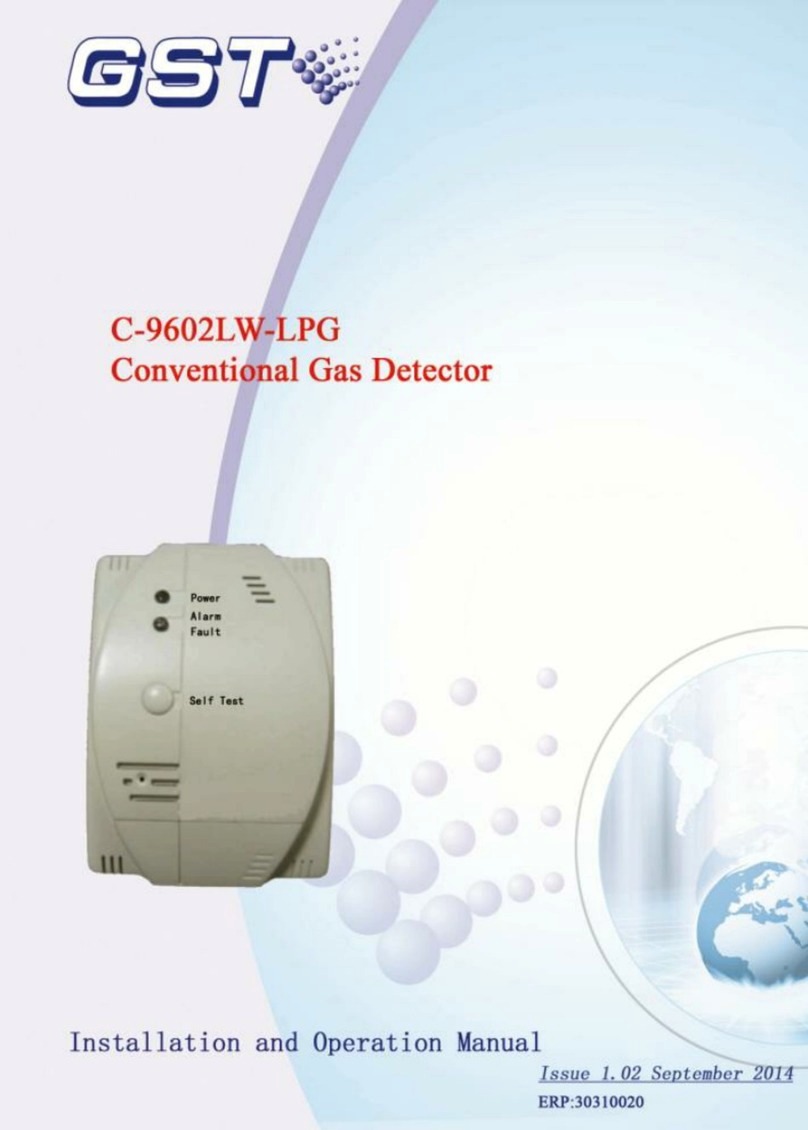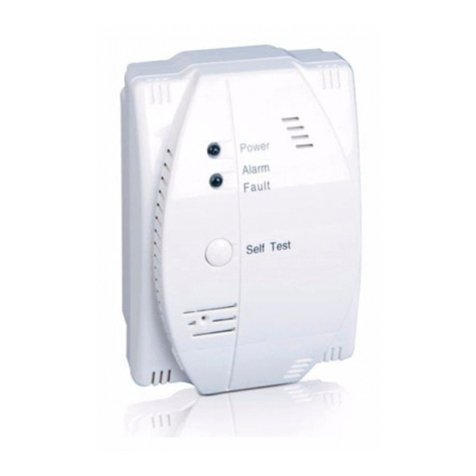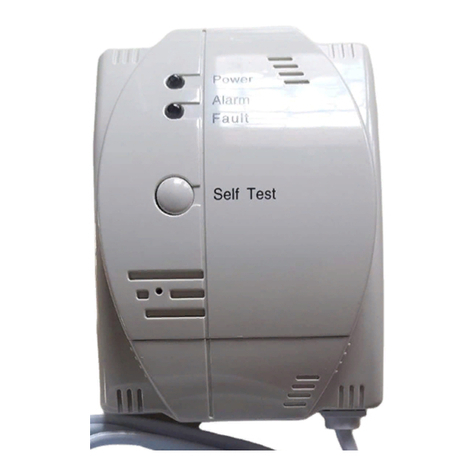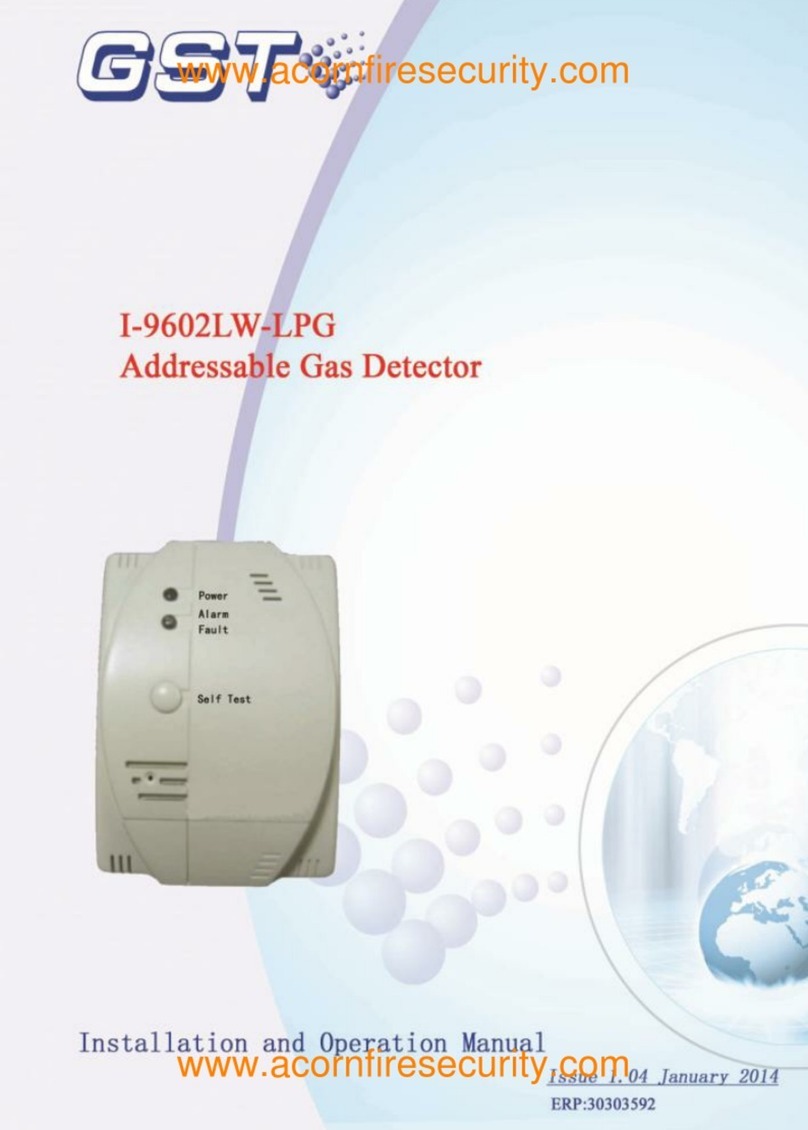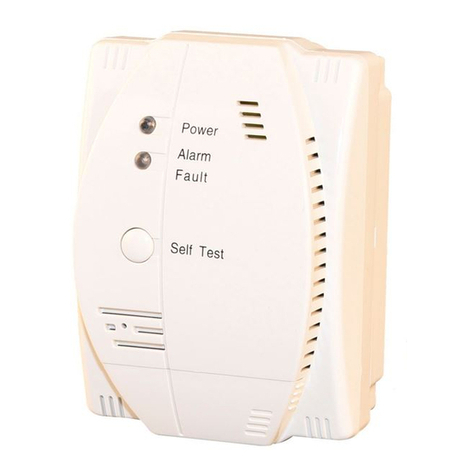
7
a. Put the bracket in the groove of the detector
(by default before leaving the factory).
b. Install a screw on the wall with head about
6mm above the wall surface.
c. Hang the detector with the bracket on the
wall.
4. Wiring
0.5mm2or above Fire-resistant copper core
cable for V+ and V-.
1.0mm2or above Fire-resistant copper core
cable for K1 and K2.
V Application
1. Applying power supply to the detector
after wiring and checking, the green LED
flashes 3~6 minutes for warm-up, and then it
will light constantly for normal monitoring.
2. Alarming: When the volume ratio of coal
gas to be monitored is above the alarm set
point, the detector gives quick intermittent
"Tick" sound with red LED quick flashing and
K1 and K2 are closed. After alarming for 3s~7s,
the detector will output a forward pulse current
to close solenoid. When the volume ratio of coal
gas goes below the alarm set point, the
detector will automatically stop audible and
visual signal and K1, K2 will be self-opened. If,





